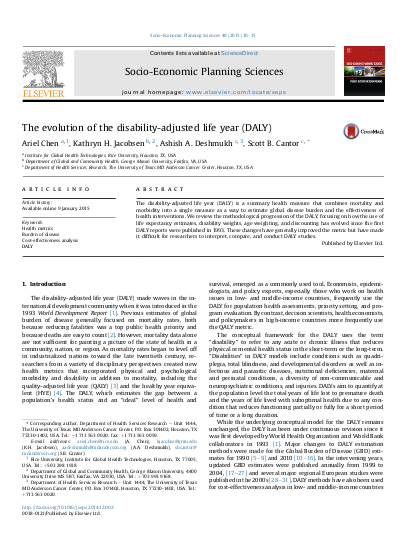
The disability-adjusted life year (DALY) is a summary health measure that combines mortality and morbidity into a single measure as a way to estimate global disease burden and the effectiveness of health interventions. We review the methodological progression of the DALY, focusing on how the use of life expectancy estimates, disability weights, age weighting, and discounting has evolved since the first DALY reports were published in 1993. These changes have generally improved the metric but have made it difficult for researchers to interpret, compare, and conduct DALY studies.